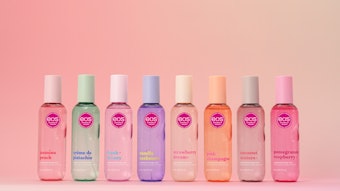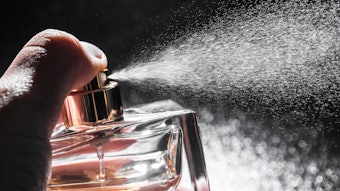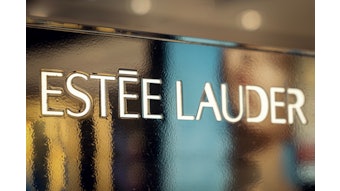Courtesy of Perfume & Flavorist magazine.
U.S. consumers are drawn to air care for several reasons, according to Euromonitor International. Busy lifestyles translate into less cleaning at home, but consumers still want a home that smells fresh. Air fresheners help maintain a pleasant household scent without necessitating extensive cleaning. Others use air fresheners to create ambiance, to set the mood or to relax after a long day. Pet owners are key purchasers of air fresheners in the United States. Increased rates of pet ownership (and its accompanying odors) necessitate air freshening in many homes. Tweens (8–12 years old) and teenagers are increasingly being targeted by air care manufacturers. S.C. Johnson & Son, Inc. was the first to target this young consumer group with its Glade Plug-Ins Scented Oil Light Show, giving them the ability to change fragrance and colors.
Sales Recap
Standard spray/aerosol air fresheners were the fastest growing category in 2007, with 9% current value growth to reach sales of $471 million. This growth was due to the summer 2007 launch of Reckitt Benckiser’s Air Wick Freshmatic Mini, a smaller, more attractive version of the Air Wick Freshmatic. Like the original, the Mini version can be set to spray a burst of fragrance every seven and a half minutes, 15 minutes or 30 minutes. Unlike the original, the Mini’s small size and sculptural look allow it to blend into more rooms, such as bathrooms. While sprays/aerosols have been around for years, manufacturers are introducing more innovative varieties that offer better fragrance.
P&G's Febreze Air Effects has done well since its 2004 launch by claiming to eliminate odor instead of just covering it up, and by supporting the product with extensive advertising and a constant array of new fragrances. The Dial Corp.’s early 2007 addition of Renuzit Subtle Effects also helped boost sales of spray/aerosol air fresheners. Renuzit Subtle Effects offers the look of an upscale air freshener with its sleek, brushed aluminum containers at a mass-market price.
Candle air fresheners experienced a sales decline of 5% in 2007, after an increase of 23% in 2006. Retail sales of candle air fresheners reached $331 million in 2007. The double-digit growth of 2006 was driven by S.C. Johnson’s Glade Scented Oil Candles. The company created a lot of consumer excitement when it introduced the new scented oil-in-a-candle concept in 2005. The candle melts completely into a pool of scented oil and fills the room with fragrance. The company continued to support the brand in 2006, adding a new trio variety. Candle air fresheners are popular with consumers because they offer sensorial and aesthetic benefits—air freshening and beautiful colors—to complement a room’s decor.
Furthermore, car air fresheners registered a growth of 2% in 2007 to reach sales of $286 million. Consumer movement to more premium formats such as Glade Car Scented Oil and Renuzit Car led to value growth, while volume sales grew by less than 1% in 2007. Continued demand for Renuzit LongLast Adjustables helped growth in gel air fresheners to reach 4% in 2007.
Decreasing Sales
Air care sales only grew by 1% in current value terms in 2007. In contrast, air care sales grew by 9% in 2006 and by a current value compound annual growth rate (CAGR) of 8% between 2002 and 2007. A reduction in demand for electric air fresheners led to the slowdown in growth in air fresheners in 2007. After growing by 8% in 2006, electric air fresheners grew by only 2% in 2007 to reach sales of $795 million.
Safety is key: A September 2007 National Resources Defense Council (NRDC) study that found phthalates in air fresheners raised consumer concerns about safety. The environmental group analyzed 14 air fresheners and found 12 contained phthalates, chemicals that may affect hormones and reproductive development. Some studies have linked phthalates with affecting testosterone levels and reproductive abnormalities such as abnormal genitalia and reduced sperm production. In the same month, the NRDC, along with the Sierra Club, Alliance for Healthy Homes and the National Center for Healthy Housing filed a petition with the Environmental Protection Agency (EPA) and the Consumer Product Safety Commission (CPSC) asking the federal agencies to start testing all air fresheners for safety.
Absence of innovation: The slowdown in electric formats can be attributed to an absence of innovation in 2007. Earlier years in the review period witnessed more innovations, such as Febreze Noticeables by The Procter & Gamble Co. (2006), Glade Plug-Ins Scented Oil Light Show by S.C. Johnson (2006) and Air Wick Mobil’Air by Reckitt Benckiser Inc. (2004). In contrast, 2007’s most notable new electric air freshener launch was Glade Wisp Flameless Candle, a candle variant of Glade Wisp Battery Operated Home Fragrancer, which was launched in 2004. Demand for electric air fresheners remains strong, as many of the products offer dual benefits, such as fragrance dispensing along with lighting. In this series is S.C. Johnson’s Glade Scented Oil Light Show, targeted at teens, which creates multicolored light on the walls in addition to releasing fragrance. Procter & Gamble also launched Febreze Noticeables Nightlights, a combination of ambient light and a soothing fragrance.
Aromatic avoidance: A September 2007 NRDC study highlighted safety concerns specific to air fresheners that could substantially reduce demand for air fresheners. The NRDC found phthalates, chemicals linked with hormones and reproductive development, in air fresheners.
There is also a movement towards fragrance-free policies in workplaces, which is raising consumer concerns about fragrances and allergic reactions. Activists in San Francisco successfully banned chocolate chip cookie “scent strips” from bus shelters by stating that the “Got Milk?” advertising could cause asthma attacks and allergic reactions. Fragrances were also named “Allergen of the Year” in 2007 by the American Contact Dermatitis Society.
Prospects
Air care is projected to grow by only 1% between 2007 and 2012 in constant value terms. This low forecast, in contrast to the strong constant value rise seen over the review period, will be due to saturation of the category. In addition to maturity, there are other potential forecasted threats to growth. Increasing concerns about the harmful effects of chemicals in food and personal care products are prompting some consumers to also take a closer look at ingredient labels on household care products. With many consumers pursuing a “less is more” philosophy in consumer products, shoppers are apt to try to avoid added fragrances in order to reduce chemical consumption and reduce allergenic sensitivities.
Fresh air forecast: Electric air fresheners are projected to grow by 9% in constant value terms between 2007 and 2012, reflecting a slowdown from the 2002–2007 review period growth. Electric air fresheners now represent a mature part of air care, where significant improvements in delivery mechanisms, such as adjustability, night lights, extra outlets and fans, have already been made. This does not leave much scope for further improvements, which are likely to focus on decorative elements and lighting features.
Additionally, liquid air fresheners are forecast to grow by 13% in volume terms between 2007 and 2012, from a very small base. However, volume growth will be at the expense of value growth, with liquid formats projected to decline by 5% in constant value terms. Unit prices are expected to decline over the forecasted period, as more manufacturers are expected to introduce low-priced reed diffuser formats in mass-market channels. Reed diffusers are expected to gain in popularity, as they offer an aesthetically pleasing and safe alternative to candles and electric air fresheners.
On the rise: Fragrance trends in air fresheners are moving towards “clean” scents such as citrus, water and linen. While consumers continue to be interested in comforting food scents such as apple and vanilla, shoppers are now looking for fresh scents that remind them of clean laundry or the outdoors. Tropical scents such as Hawaiian breeze allow consumers a degree of escapism and a chance to “get away” from their everyday lives. Consumers are now seeking complete odor-eliminating solutions, not just to mask unpleasant odors. Procter & Gamble has a range of extra strength odor eliminators and pet odor eliminators amongst its Febreze Air Effects range.
Moreover, the decorative appeal of reed diffusers led to a 5% sales gain for liquid air fresheners in 2007, with sales totaling $46 million. Reed diffusers (reeds placed in a jar of scented oil) appeal to homeowners who like a stylish look that is reminiscent of dried flowers in a vase. The reed diffusers also allay the safety concerns associated with using candles and electric plug-ins, which represent a slight fire hazard. Reed diffusers, which started out as premium products sold in specialty stores, have now been introduced by mass-market manufacturers at prices under $10.
Climbing Competition
The increasing commodity status of air care products is likely to lead to declines for other types of air care products, such as concentrated sprays, gel air fresheners and other household air care. In the absence of meaningful innovation, these types of air fresheners are expected to realize poor sales between 2007 and 2012, because each of these formats is mature and faces competition from more innovative air freshening products. Carpet powders, for example, have not seen any innovation in recent memory, nor can they be readily improved upon. However, as they are nevertheless effective products, they have endured.
Similarly, sales of gel air fresheners are driven to a large extent by products such as Renuzit LongLast Adjustables, which has been present for many years, during which time it has seen innovation only in terms of fragrance.
Price competition is expected to be strong in the forecast period, with heavy discounting, such as buy one, get one free or half price offers. In turn, unit prices are projected to decline for many air freshener formats.
Potential company activity is likely to focus on new fragrances and added decorative features. Electric air care manufacturers may introduce more lighting features to distinguish their products from the competition.










